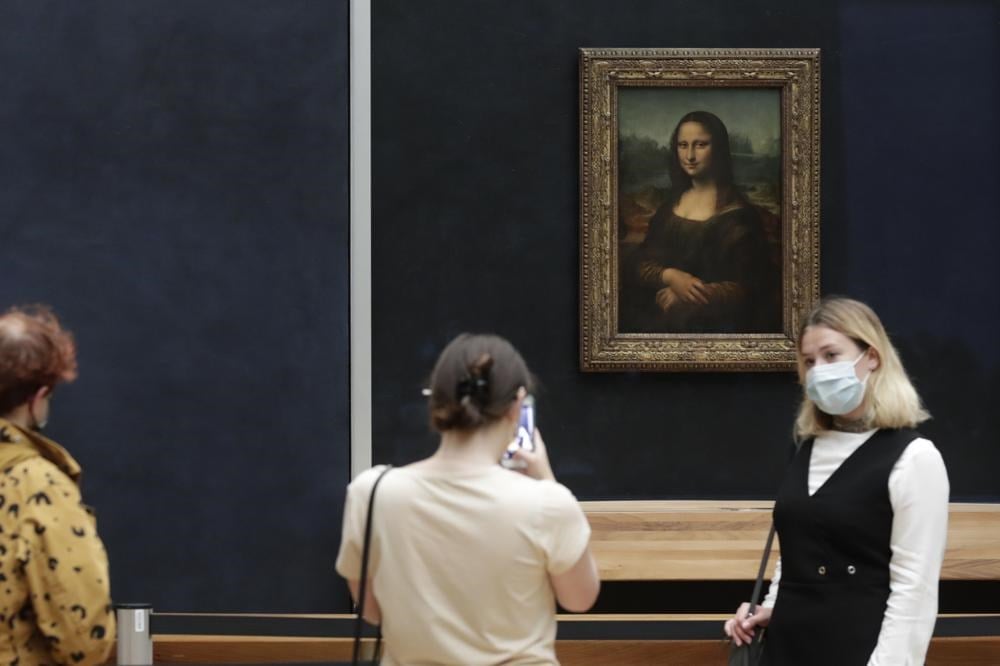Historian claims unraveling mystery of bridge in Mona Lisa painting
The bridge was either Ponte Bobbio in the northern Italian city of Piacenza or Ponte Buriano, which is close to Laterina, according to past theories, but new findings say otherwise.
-

Visitors pose in front of Leonardo da Vinci's Mona Lisa in the Louvre Museum, Wednesday, May 19, 2021, in Paris. (AP)
Excitement prevails over a Tuscan village after it was alleged that the municipality owns the bridge depicted as the landscape in the world's most renowned image, Leonardo da Vinci's Mona Lisa.
Silvano Vinceti, an Italian historian, declared that he was certain that Leonardo painted the Romito di Laterina bridge in the region of Arezzo behind the mysterious Mona Lisa. This would put an end to the mystery that has sparked endless arguments over the years.
Early in the 16th century, Leonardo painted the Mona Lisa in Florence. The identity of the woman in the oil painting, largely accepted to be Lisa del Giocondo, has sparked as much conjecture as the far-off setting.
In the past, theories have suggested that the bridge is either Ponte Bobbio in the northern Italian city of Piacenza or Ponte Buriano, which is close to Laterina.
Vinceti claimed it was "the Etruscan-Roman bridge, Romito," using historical records, drone footage, and parallels between the painting and local-area photos.
The number of arches—both the bridge in Leonardo's painting and the Romito had four—was the most significant element, he told reporters at the foreign press association in Rome. Ponte Buriano has six arches, while Ponte Bobbio has more than six.
The foundations of the bridge on the other side of the riverbed are still visible, along with one of the Romito's many arches that once crossed the Arno.
According to documents belonging to the Medici family that was discovered in Florence's state archives, the bridge was "a very busy, functioning bridge" between 1501 and 1503, as per Vinceti. Specifically at that time, he said, Leonardo was in the Val d'Arno region, working first for Piero Soderini, a statesman of the Republic of Florence, and later for Cesare Borgia, a cardinal from the most infamous noble family in Renaissance Italy.
“The distinctive form of the Arno along that stretch of territory corresponds to what Leonardo portrayed in the landscape to the left of the noblewoman depicted in the famous painting,” he said.
Vinceti also discovered documents that confirm Leonardo frequently resided in Fiesole at the time, along with his uncle.
Vinceti has previously asserted a number of other things regarding the Mona Lisa, including that Leonardo employed both a male and female model for the portrait, which is displayed at the Paris Louvre behind bulletproof glass.

 3 Min Read
3 Min Read








